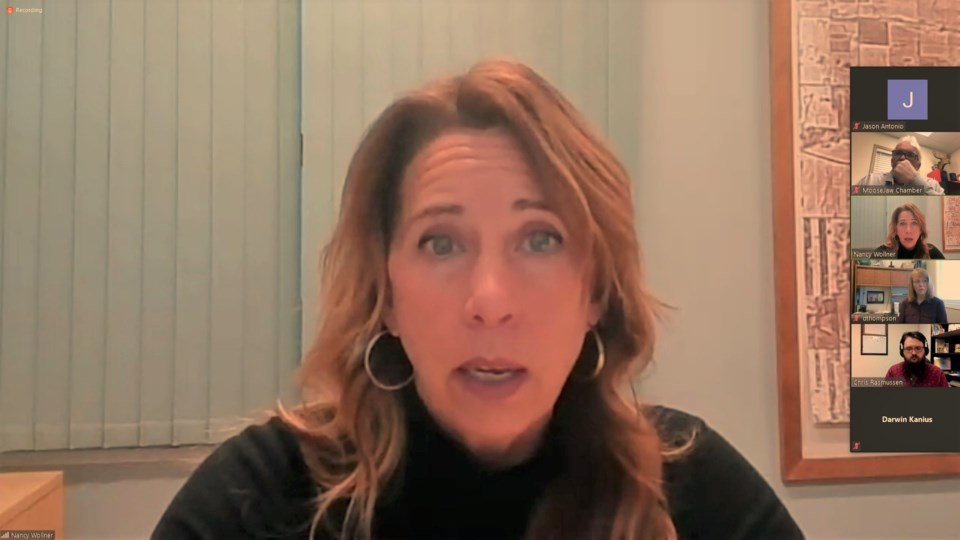It might appear that more property owners are appealing the assessment values of their land every year, but the manager of Moose Jaw’s assessment office says that is mostly untrue.
The Saskatchewan Assessment Management Agency (SAMA) has had an agreement with the City of Moose Jaw to assess properties since 2006. During those 15 years, there has not been a significant increase in appeals, SAMA's Nancy Wollner said during an online presentation on May 20. There was a slight jump in 2017, which the media reported at that time.
Wollner and another colleague worked for the municipality before 2006 and saw the appeals coming in then. There was not a noticeable increase in property owners attempting to reverse their lands’ values.
While it seems like there has been an increase in appeals at the municipal level, after property owners have gone through the appeals process, SAMA’s evaluations have been upheld 95 per cent of the time at the provincial and court of appeal levels, Wollner said.
“I don’t know what’s creating those appeals, but what I can say with pride — and for the city — is we are trying to provide that stability,” she continued. “And the courts have said that our values are what they are and they’ve upheld them.
“In the end, we have stability, but definitely through the appeal process, there can be ups and downs. The local board can decide one way and the provincial board can reverse it. And that’s what happened in a lot of cases for the City of Moose Jaw.”
Chris Rasmussen, who moderated the online presentation for the chamber of commerce, pointed out that there are firms dedicated to appealing assessments. He wondered how SAMA handled those challenges so that the City of Moose Jaw could budget more effectively.
During the last assessment cycle from 2016 to 2020, SAMA lost some appeals at the municipal level, Wollner said. However, 95 per cent of appeals cases that went to the provincial or court levels afterward were in the agency’s favour.
Wollner was unsure how budgetary stability could be provided to the city, especially when the courts were ruling mostly in SAMA’s favour.
“The legislation allows for agents to be part of the appeal process, and if a property owner wants to have an agent, that’s fine,” she continued. “We do have an authorization form we give them to fill in so we know they’re representing a property owner … .”
Some agents have appealed on behalf of property owners but later withdrew the complaint since the agents were not authorized, she added.
Property owners have 60 days during a revaluation year — such as in 2021 — to appeal their property assessment value, while they have 30 days to appeal in other years.
Provincial regulations
The agency is bound by provincial regulations, acts, and legislation when undertaking its duties, explained Wollner. As part of its duties, the organization has two main roles and responsibilities: governance and assessment services.
In its governance role, the province charges SAMA to establish and maintain all the rules and policies that assessors throughout Saskatchewan must follow. That also includes producing handbooks and guidebooks.
Furthermore, the organization administers the provincial quality assurance, which includes roll balancing — which all municipalities submit to the province each year — and primary audits. SAMA is also tasked with maintaining a province-wide computer-aided mass appraisal system that holds all the information about properties.
SAMA administers $250 billion worth of assessments throughout the province, which generate $2.5 billion in taxes.
Its assessment services role includes evaluating 758 of 762 municipalities in Saskatchewan; Regina, Saskatoon, Prince Albert and Swift Current perform their assessments, said Wollner. Meanwhile, there are seven regional offices and one central office, with 110 employees looking after assessment services and 41 staff focusing on governance.
Purpose of assessment
SAMA is not involved in the taxation of properties, which is the main source of revenue that municipalities — which solely determine taxation — use to provide services, Wollner said. Instead, the agency provides the assessment evaluations to the municipalities, which then base their taxation rates on those results.
The provincial government is responsible for setting the provincial percentages of value in areas such as residential and the education mill rates. An explanation about all of this is contained on the assessment notices that property owners receive from city hall.




